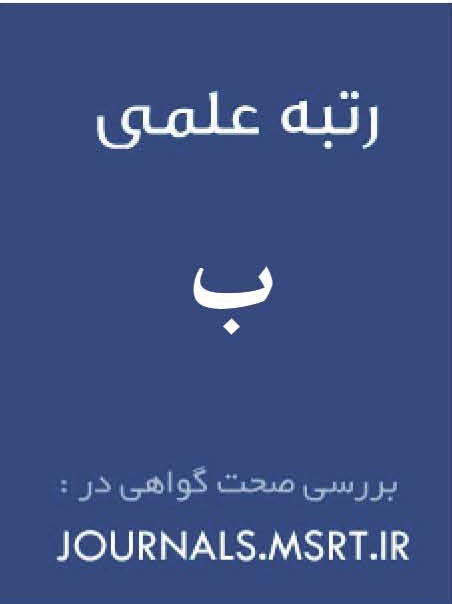The Moderating Effect of Financial Requirements and Financial Literacy on the Relationship Between Financial Technology and Money Laundering
Keywords:
Financial requirement, financial literacy, financial technology, money launderingAbstract
The objective of this study is to explore the impact of financial technology on the emergence of money laundering, with an emphasis on the moderating role of financial requirements and financial literacy. Given the significant growth of fintech tools and platforms, it is essential to analyze their effects on financial risks, particularly in the realm of economic crimes. While the emergence of financial technology—through innovative solutions such as digital payments, cryptocurrencies, and decentralized platforms—has brought about positive transformations in financial access, it has also, due to features such as anonymity, high speed, and the elimination of intermediaries, become an attractive tool for financial criminals and introduced new risks into the money laundering process. The aim of the present research is to examine the moderating effects of financial requirements and financial literacy on the relationship between financial technology and money laundering. This study is categorized as applied research in terms of its objective and employs a survey-based methodology for data collection. The statistical population comprises financial managers and employees of institutions affiliated with the Iranian Association of Certified Accountants in Tehran. Based on Morgan’s table, the sample size was determined to be 384 individuals, selected through a random sampling method. The validity and reliability of the questionnaire were confirmed, and the data were analyzed using PLS3 software. The findings indicate that financial technology has a direct effect on the phenomenon of money laundering, and this impact can be mitigated when effective financial requirements and high levels of financial literacy are present. The results suggest that the presence of clear financial regulations and users’ financial awareness plays a significant role in preventing the misuse of innovative financial technologies for money laundering purposes. Moreover, the interaction among the study’s variables demonstrates that regulatory frameworks and financial education are crucial in strengthening financial transparency. Overall, the integration of financial technology with efficient regulatory institutions and financial education may lead to a reduction in risks associated with financial crimes.
Downloads
References
AlQudah, A., Hailat, M., & Setabouha, D. (2025). Money Laundering in Global Economies: How Economic Openness and Governance Affect Money Laundering in the EU, G20, BRICS, and CIVETS. Journal of Risk and Financial Management, 18(6), 319. https://doi.org/10.3390/jrfm18060319
Andni, R. (2025). The Impact of Money Laundering on Global Economic Stability and International Business: A Multidimensional Analysis. Journal of Business Crime, 1(1), 1-10. https://doi.org/10.70764/gdpu-jbc.2025.1(1)-01
Bk, M., & Ramasubramanian, V. H. (2025). Anti-money laundering system in detecting and preventing money laundering activities: a systematic review. Journal of Money Laundering Control, 28(2), 385-407. https://doi.org/10.1108/JMLC-07-2024-0108
Boyko, A., Zimbroff, A., Mynenko, S., & Chen, Y. (2024). Anti-money laundering in the digital economy: Institutional, financial, and educational channels. Virtual Economics, 7(3), 59-80. https://doi.org/10.34021/ve.2024.07.03(4)
Ciantar, L. (2024). Empowering young people against financial crime: education about anti-money laundering and combating the financing of terrorism in business subjects
Ifrani, I. (2019). Assessing money laundering in the digital era: The high potential of cyber laundering on the revolution of financial technology.
Irwin, S. M., Slay, J., Raymond Choo, K. K., & Lui, L. (2014). Money laundering and terrorism financing in virtual environments: a feasibility study. Journal of Money Laundering Control, 17(1), 50-75. https://doi.org/10.1108/JMLC-06-2013-0019
Ismail, S., Abdou, R. M., & Ibrahim, M. S. (2025). Who is Better in Practicing Customer Due Diligence as an Anti-Money Laundering Tool for Financial Institutions: Can Internal Auditors Be Forensic Accountants? Evidence from MENA Region. In Sustainable Data Management: Navigating Big Data, Communication Technology, and Business Digital Leadership. Volume 1 (pp. 11-23). https://doi.org/10.1007/978-3-031-83911-5_2
Jayasekara, S. D. (2021). Deficient regimes of anti-money laundering and countering the financing of terrorism: agenda of digital banking and financial inclusion. Journal of Money Laundering Control, 24(1), 150-162. https://doi.org/10.1108/JMLC-04-2020-0035
Jimu, T., & Chimwai, L. (2025). Using the Technology Acceptance Model in Assessing the Impact of Financial Intelligence Systems on Money Laundering Detection in Zimbabwean Financial Institutions. Kuveza neKuumba: The Zimbabwe Ezekiel Guti University Journal of Design, Innovative Thinking and Practice, 158-186. https://doi.org/10.71458/w1zwfb84
Kalibri, F. (2022). The Impact of Electronic Banking on Financial Transparency, Resource Allocation, and Combating Money Laundering and Banking Crimes. https://civilica.com/doc/1738016
Khan, A., Jillani, M. A. H. S., Ullah, M., & Khan, M. (2025). Regulatory strategies for combatting money laundering in the era of digital trade. Journal of Money Laundering Control, 28(2), 408-423. https://doi.org/10.1108/JMLC-07-2024-0113
Le Nguyen, C. (2018). Preventing the use of financial institutions for money laundering and the implications for financial privacy. Journal of Money Laundering Control, 21(1), 47-58. https://doi.org/10.1108/JMLC-01-2017-0004
Liu, J. (2025). The Roles of Technology in Anti-Money Laundering. Science Insights, 46(4), 1813-1819. https://doi.org/10.15354/si.25.re1175
Mashhadizadeh, R., Rahnamaye Roodposhti, F., Ahmadi, F., & Mohammadi Pour, R. (2024). Prioritization of Financial Resilience Factors in FinTech Businesses Using Fuzzy ANP Approach. Journal of Financial Management Studies, 17(62), 21-38.
Meiryani, M., Soepriyanto, G., & Audrelia, J. (2023). Effectiveness of regulatory technology implementation in Indonesian banking sector to prevent money laundering and terrorist financing. Journal of Money Laundering Control, 26(4), 892-908. https://doi.org/10.1108/JMLC-04-2022-0059
Montazeri, M. (2024). Impact of Anti-Money Laundering Laws on Accounting and Financial Reporting Systems in Iran. https://civilica.com/doc/2239246
Ofoeda, I. (2022). Anti-money laundering regulations and financial inclusion: empirical evidence across the globe. Journal of Financial Regulation and Compliance, 30(5), 646-664. https://doi.org/10.1108/JFRC-12-2021-0106
Okello Candiya Bongomin, G., Akol Malinga, C., Manzi Amani, A., & Balinda, R. (2025). Recalibrating the scope of financial inclusion through financial technologies in the digital age: the role of digital literacy as a moderator in rural Uganda. Information Technology & People, 38(3), 1178-1207. https://doi.org/10.1108/ITP-09-2022-0732
Popik-Mazur, A. (2025). A systematic literature review of illicit financial flows and money laundering: Current state of research and estimation methods. Journal of Economics and Management, 47(1), 257-298. https://doi.org/10.22367/jem.2025.47.11
Pratomo, W. B., Zainal, V. R., & Hakim, A. (2023). Money laundering with financial technology. Journal of Economics and Business UBS, 12(5), 3132-3141. https://doi.org/10.52644/joeb.v12i5.614
Takaedza, L. (2025). A balancing of interests: financial inclusion, the fight against money laundering and terrorism financing, and the role of banks. Journal of South African Law/Tydskrif vir die Suid-Afrikaanse Reg, 2025(2), 281-297. https://doi.org/10.47348/TSAR/2025/i2a4
Urooj, S., Ullah, A., Ullah, S., & Nobanee, H. (2025). Sustainable Entrepreneurship in the Digital Era: The Role of Digital Financial Capability and Anti-Money Laundering Compliance. Business Strategy & Development, 8(3), e70147. https://doi.org/10.1002/bsd2.70147
Usman, N., Griffiths, M., & Alam, A. (2025). FinTech and money laundering: moderating effect of financial regulations and financial literacy. Digital Policy, Regulation and Governance, 27(3), 301-326. https://doi.org/10.1108/DPRG-04-2024-0068
Whisker, J., & Lokanan, M. E. (2019). Anti-money laundering and counter-terrorist financing threats posed by mobile money. Journal of Money Laundering Control, 22(1), 158-172. https://doi.org/10.1108/JMLC-10-2017-0061
Wronka, C. (2022). Cyber-laundering: the change of money laundering in the digital age. Journal of Money Laundering Control, 25(2), 330-344. https://doi.org/10.1108/JMLC-04-2021-0035
Downloads
Published
Submitted
Revised
Accepted
Issue
Section
License
Copyright (c) 2025 Mohsen Hashemi Gohar (Corresponding author); Mohaddeseh Rahmati Fakhrabadi (Author)

This work is licensed under a Creative Commons Attribution-NonCommercial 4.0 International License.









